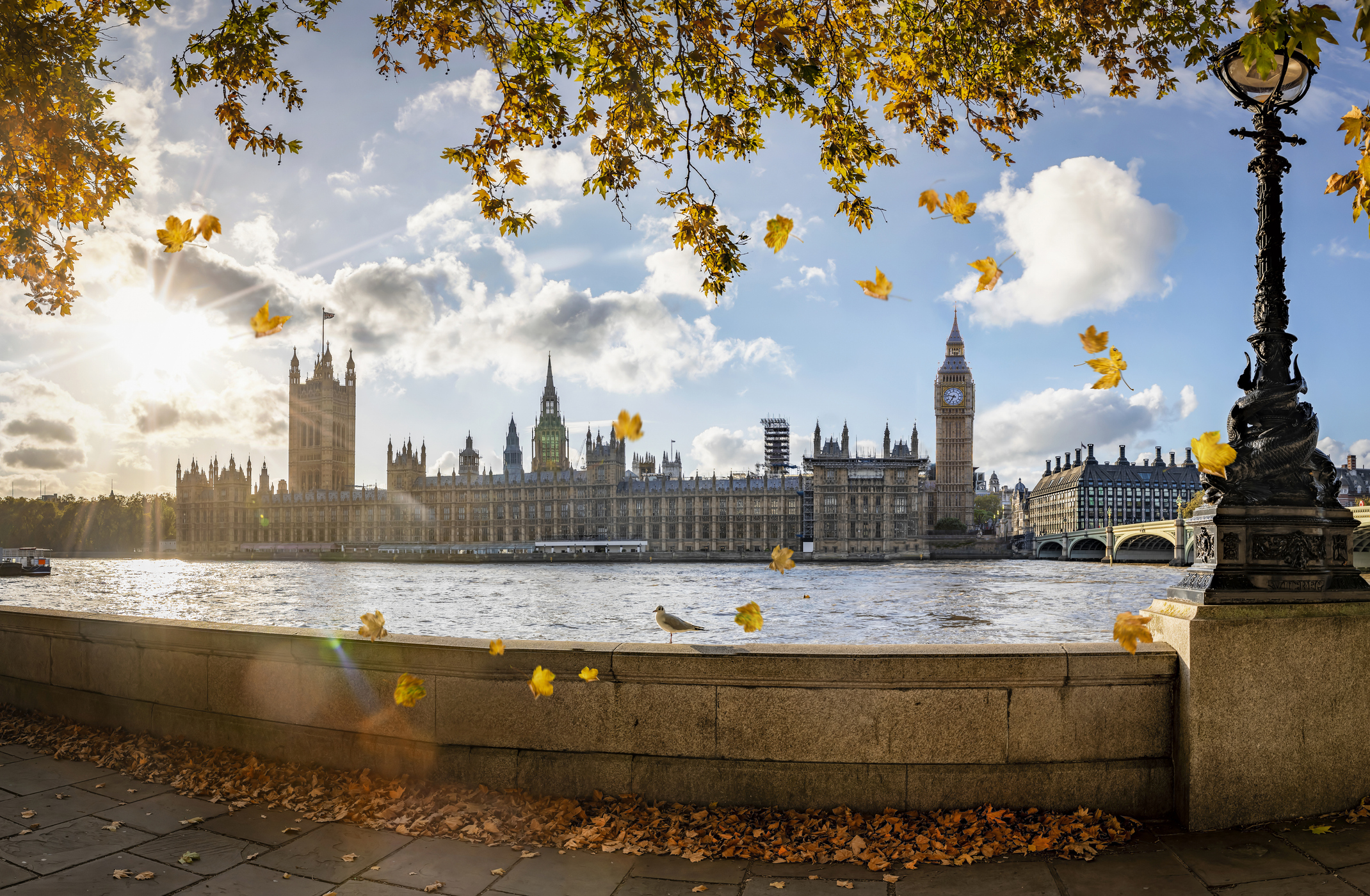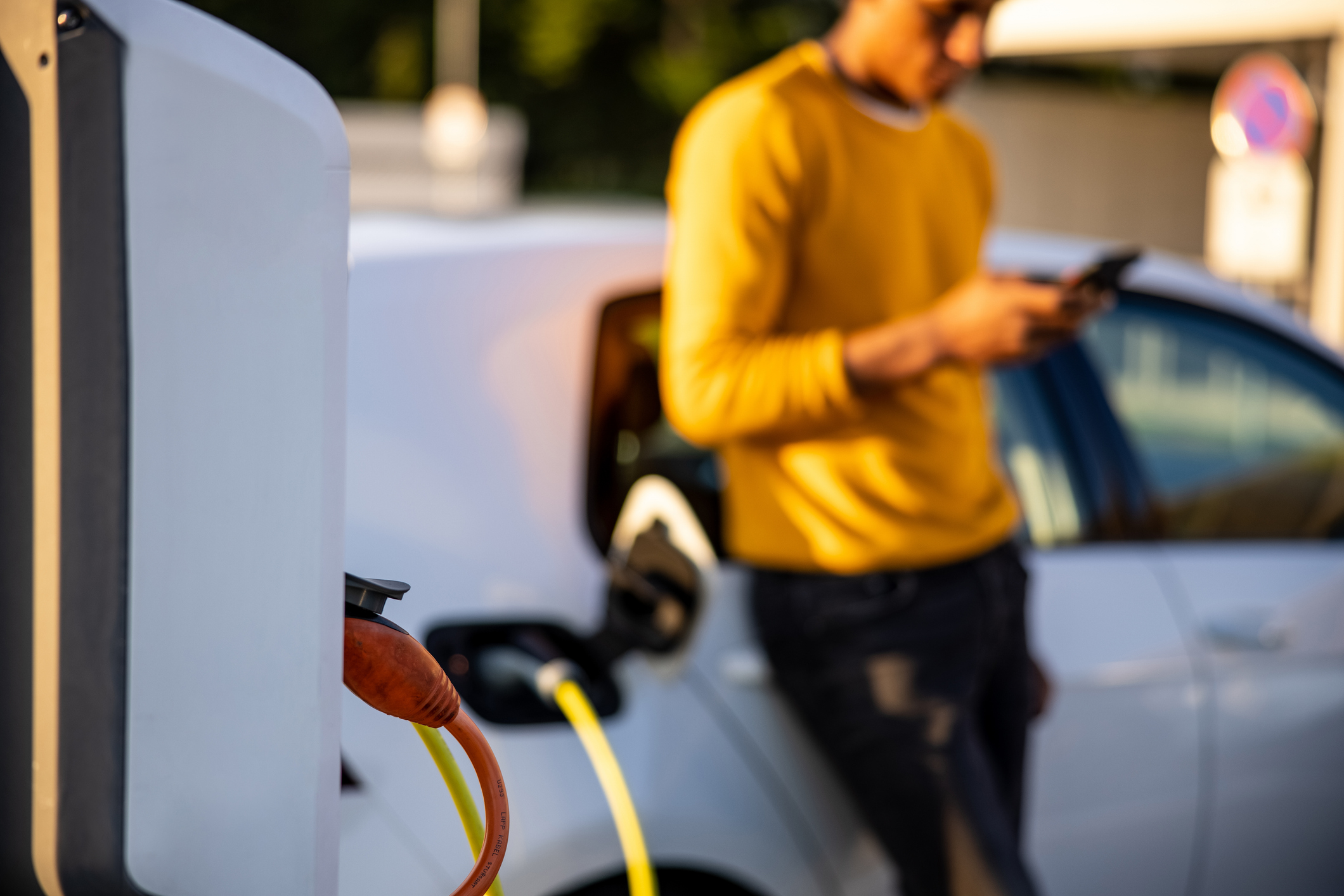Autumn Budget 2024: Key Things You Need to Know
Written by
Wednesday 6th November 2024
Last updated: 4th February 2025

We all knew that this would be a momentous Budget. Not just because it was the first Budget to be delivered by a female Chancellor, or because it was the first Labour Budget in 14 years, but because we have been told for months that this was going to hurt. And with £40 billion in tax rises this was, as the Chancellor said, “not a budget I want to repeat”.
Whilst the message might have been to ‘invest, invest, invest’, some might argue this will mean the need to ‘borrow, borrow, borrow.’ How will Labour drive economic growth and stick within the fiscal rules?
New ‘Net Financial Debt’ Measure Enables Additional Borrowing
Since 1997, the government has used Public Sector Net Debt (PSND) as the official measure of national debt. In simple terms, this compares the value of liquid assets, such as tax receipts, FX reserves, and cash in the bank, with cash outlays — primarily public service spending.
In contrast, measuring debt according to Public Sector Net Financial Liabilities, also known as net financial debt, widens the scope of what is considered to be an asset, thereby creating a more positive picture of the government’s balance sheet.
For example, the government is currently owed around £236 billion in student loans. Although it is not as simple as adding this full amount into the plus column, the government can include the portion that will realistically be expected to be repaid within a specified period. It can also include an element of public sector pension valuations, along with any financial assets held by those pension funds.
Increasing the difference between assets and liabilities in this way enables the government to borrow more money and still stay within its fiscal rules. It also alleviates the pressure for even more tax rises and deeper spending cuts.
The government’s ‘stability rule’ states that by 2029/30 they will move the current budget into balance so that day-to-day spending is met by revenues, and that any borrowing will be solely for investment purposes. For revenues, read taxes, and these are going up.
Employers’ National Insurance (NI) up to 15%
Long before it was announced, we all knew that Employers’ NI was going to increase. The only question was, by how much? From 6 April 2026, the headline rate will go up by 1.2 percentage points, from 13.8% to 15%. Additionally, the earnings threshold before employers start to make National Insurance Contributions has been lowered from £9,100 to £5,000.
The Chancellor hopes that the new rules will raise an additional £25 billion a year, but it was never going to be a popular move and the CBI Chief Executive, Rain Newton-Smith, responded to the news by saying that “the hike in National Insurance Contributions alongside other increases to the employer cost base will increase the burden on business and hit the ability to invest and ultimately make it more expensive to hire people or give pay rises”.
However, there was some good news for smaller businesses with Employment Allowance increasing from £5,000 to £10,500 and the removal of the £100,000 threshold. It’s a change that Ms Reeves says will mean “865,000 employers won’t pay any National Insurance at all next year and over one million will pay the same or less than they did previously”.
While the increase in Employers’ NI can, in many cases, impact the cost of providing company cars, it is arguably good news for businesses operating a salary sacrifice scheme that enables employees to give up — or sacrifice — a portion of their gross salary in exchange for a new EV.
In this scenario, where the employer chooses not to share any NI benefit with their employees, the employer will no longer have to pay the Employer’s National Insurance contributions on the money sacrificed. Given the increase in Employer’s National Insurance, this could represent an additional saving. That said, it’s important that salary sacrifice schemes are properly designed to balance the cost, risk, and benefit to both the business and its employees. This means that any changes need to be carefully analysed to assess the financial impact on everyone involved.

Fuel Duty Frozen for a 14th Consecutive Year
Fuel Duty was originally frozen at 57.95p per litre way back in 2011 and then, in the Spring Statement 2022, an additional 5p reduction brought the headline rate down to 52.95p. The cut was envisaged as a temporary, 12-month, measure to combat record-breaking fuel prices resulting from post-pandemic supply chain issues and Russia’s invasion of Ukraine. While the freeze has been repeatedly extended, rates were finally set to rise in March 2025 by 5p plus RPI (Retail Price Index) inflation.
Given that a further freeze would cost the government up to £3 billion, RAC head of policy, Simon Williams, said before the Budget that “the Chancellor has no option but to put fuel duty back up to 58p a litre.”
It therefore came as a relief to motorists and fleet operators when the Chancellor announced that the 5p cut will be extended for a further 12 months and that the planned increase in line with inflation for 2025/26 will be cancelled. This, she claimed, would equate to a saving of £59 in 2025/26 for the average car driver. For heavy mileage business drivers and commercial vehicle operators, the savings will be considerably higher.
Fuel Finder Scheme Set to Reduce Pump Prices (Hopefully)
The government has formally accepted the Competition and Markets Authority’s (CMA) recommendation to implement an open data scheme for fuel prices, and a market monitoring function, by the end of 2025. This will mean that all UK retail petrol stations will need to report the price and availability of fuel within 30 minutes of a change and the government aims to bring the Digital Markets, Competition and Consumers Act 2024 into force by January next year so that the CMA has the information gathering powers needed to monitor competition in the market. The hope is that by increasing the level of transparency and competition, pump prices could be reduced by up to 6p per litre.

Over £200 Million for EV Chargepoints
The government has already committed to reinstating the original 2030 ban on new ICE-only cars and that from 2035 all new cars and vans sold in the UK will be zero emission.
Realistically, this can only be achieved with a strong public charging infrastructure and the UK now has over 70,000 public charge points, 16,500 of which have been installed this year. This equates to roughly 1 charger for every 18 battery electric cars on the road. However, the picture varies by local authority, with areas such as Kensington and Chelsea boasting over 600 chargers per 100,000 of the population whereas, a few miles down the road in Lewisham, the number tumbles to 73 and in Harrow it is just 24.
To accelerate the roll out, over £200 million will be allocated in 2025/6, including funding to support local authorities to install on‑street chargepoints across England. The responsibility for funding and managing EV charging infrastructure in Scotland, Wales, and Northern Ireland would fall to their respective devolved administrations.
The government is also extending 100% First Year Allowances for EV chargepoints and zero emission vehicles for a further 12 months.
Plug-in Van Grant Extended to 2025/26
While the Budget document confirms the 2030 deadline for cars, it simply states that ICE-only vans will be phased out by 2035. This is despite the ZEV Mandate’s requirement that 70% of new vans sales must be zero-emission by 2030.
As of September 2024, there are just over 65,000 electric vans in the UK. That’s a mere 1.4% of all LCVs on the road and just under 5% of new vans sales are currently electric. Manufacturers are keenly aware of the challenge ahead and have expressed concerns about their ability to meet the ZEV mandate targets for both cars and vans. However, the mandate remains in force and the targets must be hit, or at least managed through some form of offsetting, borrowing of allowances from future years, or by using another provision within the mandate.
Part of the problem has undoubtedly been a lack of fit-for-purpose electric vans on the market. There have also been challenges arising from the fact that many public charging bays are designed more for cars than longer or taller vans. These are all issues that will be addressed over time, but the government clearly feels that van operators need additional persuasion and support. As a result, the Budget includes a provision of £120 million to extend the plug-in van grant and to support the manufacture of wheelchair-accessible EVs.
First Year VED for Zero Emission Cars Set at £10 Until 2029/30
Back in 2020, just 6.6% of new car sales were electric. By mid-2024 this had increased to 16.8% and, while the pace of growth varies from time to time, the overall picture is one of continued growth. That said, with just over 5 years until a ban on ICE-only car sales, incentives are still needed.
In terms of Vehicle Excise Duty (VED), the government is looking to widen the differentials between zero emission and hybrid or ICE vehicles. This means that for new cars registered on or after 1 April 2025, the following rates will apply:
- Zero emission cars will pay the lowest first-year rate of £10 until 2029/30
- Cars emitting 1-50 g/km of CO2, including hybrids, will rise to £110 for 2025/26
- Cars emitting 51-75 g/km of CO2, including hybrids, will increase to £130 for 2025/26
- Cars emitting 76 g/km of CO2 and above will see their rates double for 2025/26
From the second year onwards, these vehicles will pay the standard rate, which is currently is £190 but, along with vans and HGVs, the rate will rise in line with RPI from 1 April 2025.
The government will also uprate the Van Benefit Charge and Car and Van Fuel Benefit Charges by CPI (Consumer Price Index) from 6 April 2025.
Benefit in Kind (BiK) Rates Set up to 2029/30
The government has now published Benefit in Kind rates for 2028/29 and 2029/30. This is especially good news for drivers on longer term (4-year) leases who thus far have been forced into ordering vehicles without know the BiK implications for the final year.
The new rates continue to incentivise the take-up of EVs and the two percentage point rise for zero emission vehicles each year is as much as we could realistically hope for. This means that an EV driver will pay just 7% BiK in 2028/29 and 9% in 2029/30.
It’s not such good news for hybrids, with cars emitting 1-50g/km CO2 jumping up to 18% in 2028/29 and 19% 2029/30. For a plug-in hybrid capable of driving between 70 and 129 zero emission miles, that’s a massive 10 percentage point leap from the 2027/28 rate. It seems as though the death of hybrids is back on.
The maximum rate for ICE-only vehicles is set to rise by one percentage point per year, up to a new upper limit of 38% in 2028/29 and 39% in 2029/30.
With new EV prices falling, thanks in part to increased competition and lower battery costs, all company car drivers will see their taxes rise but most will find that EVs remain a more attractive proposition than an equivalent petrol or diesel model.
Expensive Car Supplement
In addition to paying the standard rate of VED, cars costing over £40,000 incur an additional tax known as the expensive car supplement. Dubbed a luxury car tax, it means that, from the second tax payment onwards, drivers pay an additional £410 annually for five years. EVs have until now been excluded, but will come to an end in April 2025, howeverMs Reeves acknowledged that the measure disproportionately impacts electric car drivers and said she will consider raising the threshold for zero emission cars at a future fiscal event.
Double Cab Pickup Tax Loophole Closed
A 2020 Court of Appeal ruling states that most multi-purpose vehicles, such as double cab pickup vehicles (DCPUs) are in fact cars and, despite the previous government’s u-turn on their tax treatment, DCUPs will now be treated as cars for the purposes of capital allowances, benefits in kind, and some deductions from business profits.
The measure comes into force from 1 April 2025 for Corporation Tax and 6 April 2025 for income tax. For vehicles purchased before April 2025, the existing capital allowances treatment will still apply and businesses who purchase, lease, or order a DCPU before 6 April 2025 will be able to use the current tax treatment until either the vehicle is disposed, the lease expires, or 5 April 2029, whichever comes first.
The End of ‘Contrived’ Car Ownership Schemes
Although Employee Car Ownership (ECO) schemes are not as popular as they once were, the government is looking to publish draft legislation to close a series of loopholes which mean that an employer or third party can sell a car to an employee, often via a loan with no set repayment terms and negligible interest, and then buy it back after a short period. Under such circumstances, no company car tax is paid and the Treasury estimates that closing these loopholes could net £275 million in its first year. The government anticipates that the changes will take effect from 6 April 2026.

Extra Funding for Green Energy Projects
Following the Chancellor’s speech at the International Investment Summit, where she promised to “catalyse tens of billions of pounds of private investment into the UK’s clean energy and growth industries, including green hydrogen, carbon capture and gigafactories”, the Budget included a commitment of £3.9 billion in 2025/26 for Carbon Capture, Usage and Storage Track-1 projects and contracts with 11 green hydrogen producers.
There is also £125 million in 2025/26 for Great British Energy and £2.7 billion of funding to continue Sizewell C’s development through 2025/26. There’s also £134 million for new port infrastructure to facilitate floating offshore wind and £163 million to continue the Industrial Energy Transformation Fund through to 2027/28.
£2 Billion Investment in the Automotive Sector
October 2024 saw the government launch a green paper on its modern Industrial Strategy focusing on eight growth driving sectors including life sciences, creative industries, and automotive. The Autumn Budget has now taken things a step further, with specific funding commitments of at least £2 billion in R&D and capital funding for the automotive sector, including support for zero emission vehicle manufacturing and supply chain.
Funding to Fill an Additional One Million Potholes
It wouldn’t be a Budget without a promise to fix more potholes. In fact, the Chancellor went a step further by saying that in addition to delivering on their manifesto promise to fix an additional one million potholes each year, local maintenance baseline funding would receive a £500 million boost in 2024/25. Overall, this means that almost £1.6 billion will be spent maintaining and renewing the nation’s roads.

No VAT Cut for EVs or Public Charging
In the run-up to the Budget, industry bodies such as the Society of Motor Manufacturers and Traders (SMMT) and the British Vehicle Rental and Leasing Association (BVRLA) have been asking for a 50% cut in VAT on electric vehicles. This comes on the back of the RAC’s FairCharge campaign, which calls for VAT on public charging to be reduced from its current 20% down to 5%, bringing it in line with home charging. This would certainly be a popular move and one that the RAC claim would come at a relatively low cost to the Treasury.
Whatever the financial impact of a cut, the government has decided to leave VAT on electric vehicles and public charging untouched. This could be due to the cost involved, or the practicalities of introducing such as measure, but some within the industry will be hoping that they reassess their stance at a future fiscal event.
What’s Next?
We all knew that this was going to be an interesting budget, and it appeared the strategy was to get as much of the bad news out of the way early in the government’s tenure, As is the case with all Budgets, the true impact will only become clear in the weeks and months ahead.
There are also a number of manifesto promises that were noticeable by their absence, such as battery health certificates and new measures to address the soaring cost of car insurance. Then again, these don’t necessarily need to be included within a Budget statement for progress to be made.
Count on us to keep you informed and equipped to make confident, strategic fleet decisions amid these changes. Stay ahead with expert insights—reach out today to see how we can support your journey forward.

